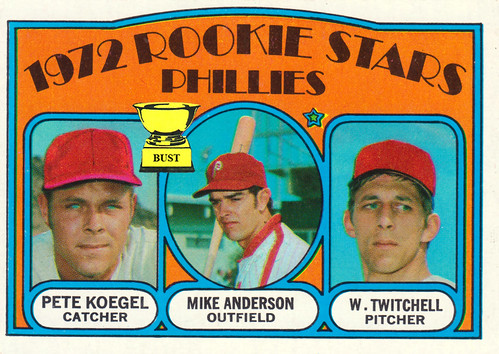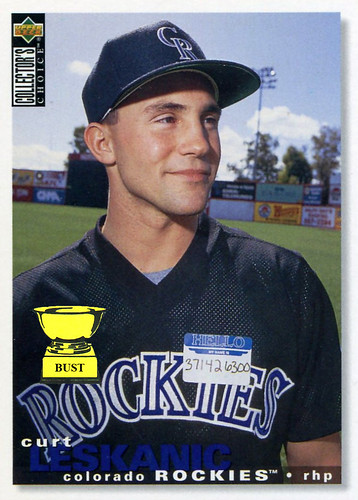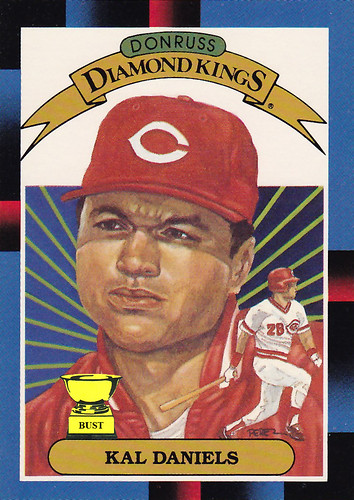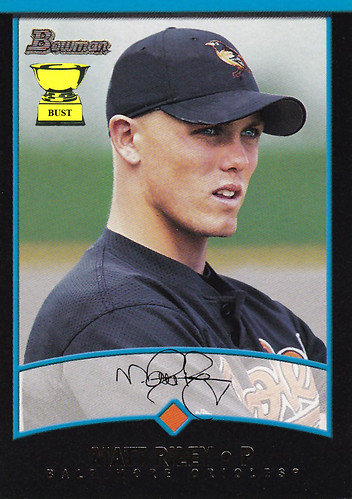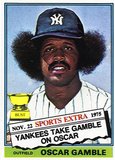Names: Pete Koegel, Mike Anderson, Wayne "W." Twitchell
Team: Philadelphia Phillies
Positions: Catcher, outfielder, and pitcher, respectively
Value of card: A handful of sunflower seed shells, still moist
Key 1971 stat: Despite what the card says, not a lot of star power
These three rookies are headed for The Matchup:
Round 1: Wearing a hat with a baseball team's logo (Winner: Anderson)
Round 2: Posing for a photo in front of some desert foothills (Winner: Koegel)
Round 3: Only one of the group to ever make an all-star appearance (Winner: Twitchell)
Round 4: The eyes of a cybernetic organism (Winner: Koegel)
Round 5: The eyes of a shady drifter (Winner: Twitchell)
Round 6: Fashionably popped collar (Winner: Anderson)
Round 7: Cheekbones that we'd absolutely die for (Winner: Koegel)
Round 8: Surname that resembles the name of that exercise for lady parts (Winner: Koegel)
Final score: Koegel 4, Anderson 2, Twitchell 2
Synopsis: Despite having inhuman eyes and enough airbrush paint to make the editors of Vogue uneasy, Pete Koegel surged late for the win. Looks like all that squatting finally paid off.

